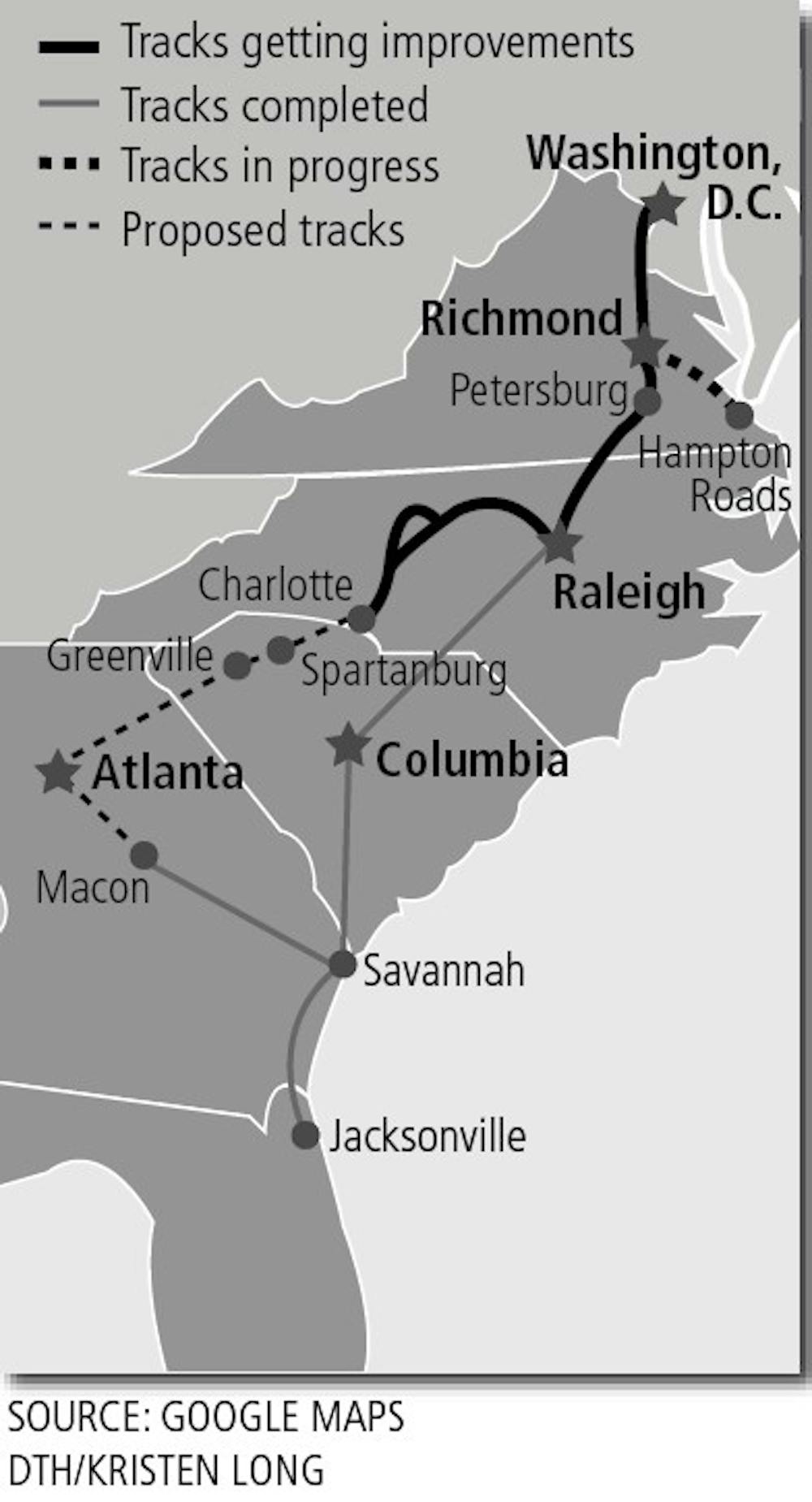William Fu, a UNC freshman, took the train home to New York for the holidays.
Because of improvements to the rail system that are meant to boost speed and efficiency, Fu said he might choose a train ride over a flight more often.
The improvement of North Carolina’s Southeast High Speed Rail is good news to students at UNC-Chapel Hill and the rest of the state population that travels frequently up and down the East Coast.
The rail will begin in Charlotte and end in Washington, D.C., passing through Raleigh and Richmond, Va., as well as some smaller towns.
Officials also hope to increase train speeds, first to 79 mph and later to 90 mph.
The proposed changes will be funded by President Barack Obama’s Southeast High Speed Rail Corridor plan, which awarded North Carolina $520 million to boost its railroad systems between Raleigh and Charlotte.
The improvements could create between 4,800 to 5,000 jobs and improve air quality, said Patrick Simmons, director of the N.C. Department of Transportation Rail Division.
“This is a jobs program,” Simmons said.
The state’s unemployment rate was reported at 11.2 percent in December 2009, the last official recording.
North Carolinians will be hired for conducting surveys and for filling construction and real estate positions.
“These folks will be employed and building infrastructure that will last for generations,” Simmons said.
The rail improvements will also decrease the need for personal vehicles. Environmentalists support the plan because the decreased need for trucks and cars will improve air quality, said Tom Mather, the spokesman for the N.C. Division of Air Quality.
The largest effect will be felt in the state’s major metro areas, such as Raleigh and Charlotte, where the cars and trucks are the biggest pollution contributors, Mather said.
“If more people start using the transit rather than using their personal vehicles, it would help curb the emissions from their vehicles,” Mather said.
Joan Bagherpour, spokeswoman for the N.C. Department of Transportation, said they have other projects in mind, but they have not yet been approved by the Federal Railroad Administration.
With part of the federal grant, North Carolina hopes to buy two used locomotives and increase train services to Raleigh, Simmons said.
They hope to add double track and grade separations, which will separate highways from the rail roads, one of their new safety measures.
Some smaller projects will be started within the next six to eight weeks, but larger projects such as building bridges to separate rail road tracks from highways will be looked at over the next two years.
Simmons said all of the funding has to be distributed to agencies and companies by September 2011.
Contact the State & National Editor at stntdesk@unc.edu.
Federal plan awards N.C. money to boost railroads
Speed, safety among the project goals

DTH/Kristen Long


